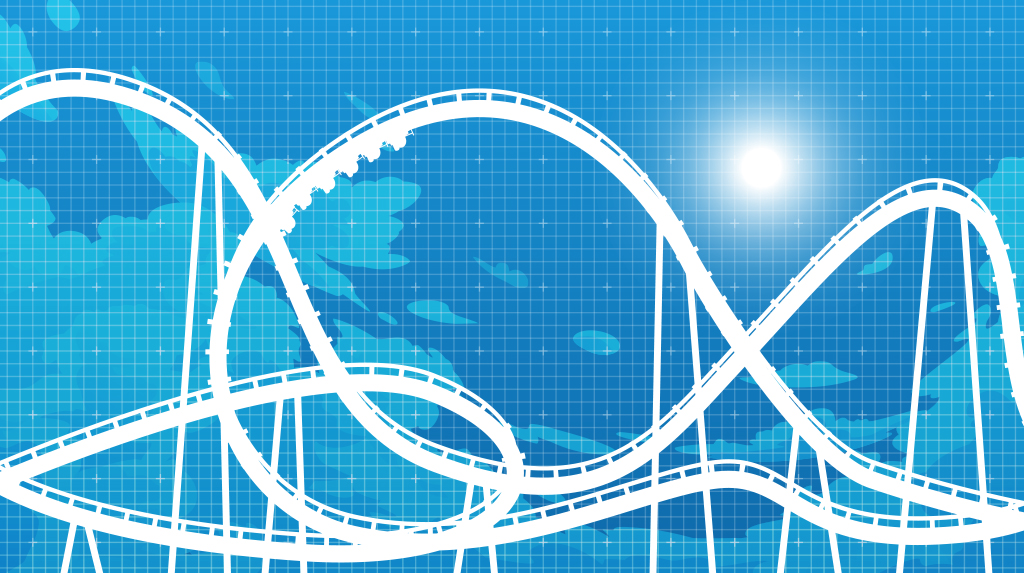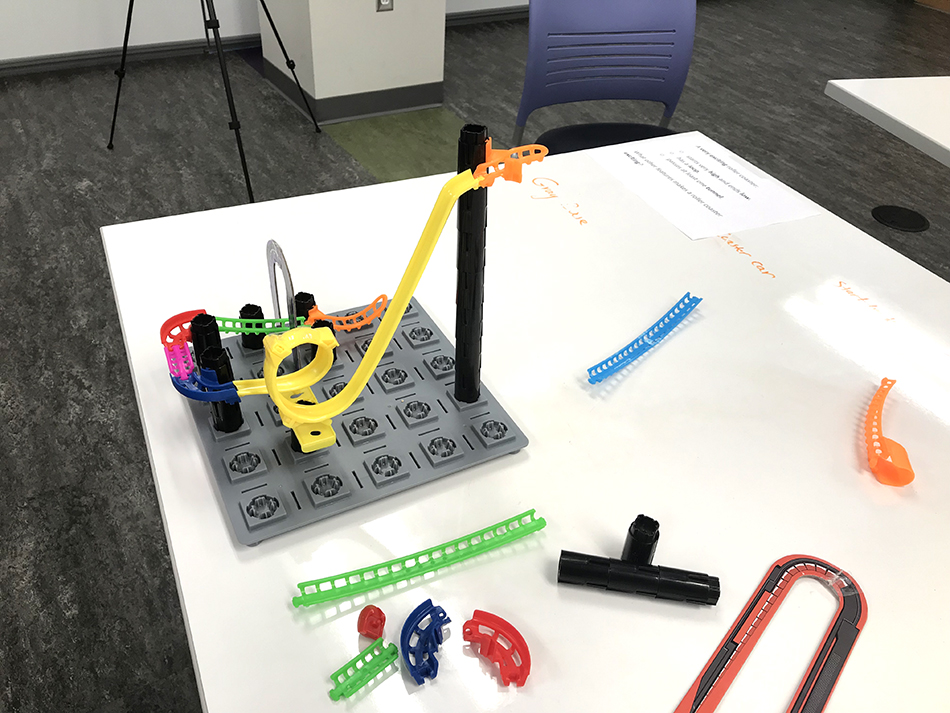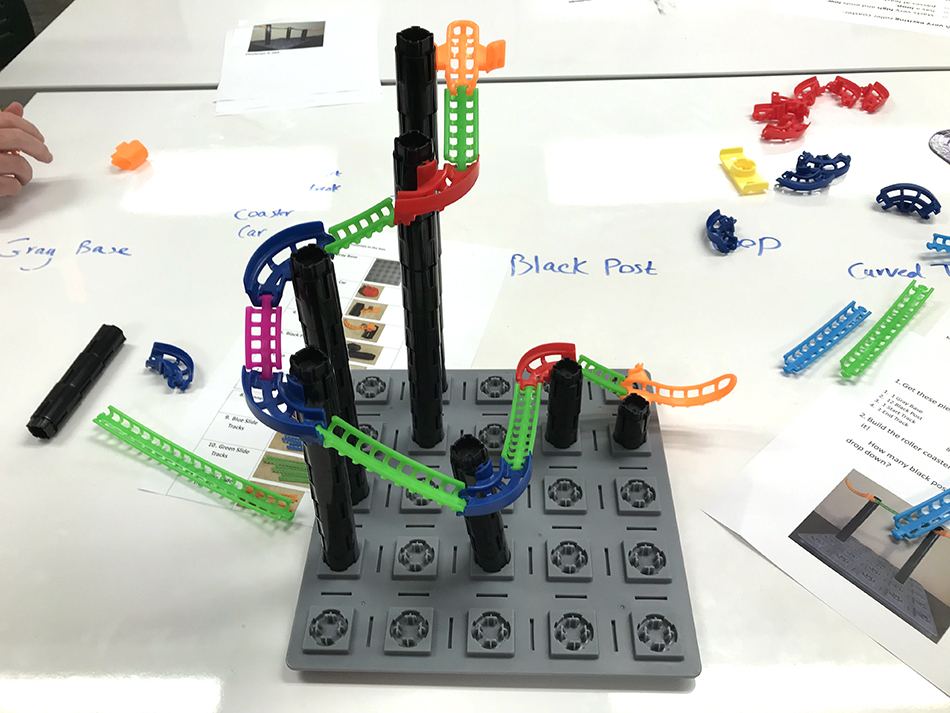Brief
Design an Amusement Park
Engineering for Children With Autism
Connected Science Learning April-June 2019 (Volume 1, Issue 10)
By Hoda Ehsan, Elizabeth Gajdzik, and Monica Cardella

In the last two decades, precollege engineering education has become more prevalent. At the same time, the number of children diagnosed with autism is rapidly growing. Over half a million children with autism will enter adulthood in the next decade (Roux et al. 2013). Therefore, more than any time before, it is important to provide effective and appropriate engineering experiences for children with autism so that they can gain technology and engineering expertise, as well as competencies to become users and innovators of technology. Although some researchers have investigated the engineering thinking of elementary-age children, very few have focused on that of neurologically different children. Therefore, there is a need and opportunity to develop research-based engineering resources for neurodiverse children. In line with the call to diversify engineering education and support the engineering learning of all children, a group of researchers at Purdue’s INSPIRE Research Institute for Pre-College Engineering has started investigating aspects of neurodiversity in engineering education and developed a set of engineering activities for children with autism. Below, we share a design activity developed to engage children with autism in engineering.
Design an Amusement Park is a series of engineering design activities that provides opportunities for children with autism to engage in engineering thinking while having fun playing with toys. Currently, the activities are designed to be appropriate for two age ranges: lower elementary (ages 5–7) and upper elementary (age 8 above). In these activities, children are asked to design and build an attraction, such as a playground, skatepark, or rollercoaster, using a toy that encourages spatial thinking, engineering design, and creativity.
Design an Amusement Park activities can be adapted to formal and informal learning environments. The activities are group-based with adult (e.g., parent or educator) facilitation. A detailed adult guide is included at the beginning of each activity. The activities can be used with all children, but are designed with special considerations for children with autism. While designing the activities, we considered both possible strengths and difficulties of children with autism. Depending on the children, the activities can last 90 to 120 minutes, in one or more sessions.
In this Brief, we highlight the Roller Coaster Challenge, which is designed for upper elementary grades. The activity consists of seven main components:
- Read-aloud with a children’s book, The Most Magnificent Thing, which shares a fictional story about a girl’s adventures as an engineer
- First letter from the director of the amusement park, introducing the design problem
- Engineering design process
- Warm-up challenges to gain familiarity with the construction kit and its pieces
- Second letter from the director of the amusement park, a recap of the problem that also introduces criteria to consider
- A message to the director to guide children in evaluating their solution
- Certificate of “Young Engineer” to hand out at the end of the activity
The Roller Coaster Challenge was modified after conducting a qualitative case study. A case study is an empirical inquiry that can provide an in-depth exploration of a phenomenon (e.g., engineering design behaviors) within a “case” (Yin 2009). In this case study we focused on three pairs of parent and child with autism as they engaged in the roller coaster activity. The preliminary findings of our study revealed that children with autism can engage in all aspects of the engineering design process. However, not all of the children needed the included prompts and considerations. Thus, differentiation in using the prompts to meet individual needs is an important component of this and other activities designed for children with autism. Parents’ (or other adults’) support played an important role in the children’s engineering engagement, problem-solving, and persistence in troubleshooting.
This link captures research-based design considerations and adult facilitation strategies used in the development of these activities. The “Autism Considerations for Design Activities” table (see Resources) can serve as a guide for other researchers and educators who design learning materials for children with autism.
Other INSPIRE learning resources can be checked out here.
Hoda Ehsan (hehsan@purdue.edu) is a graduate student in the School of Engineering Education at Purdue University in West Lafayette, Indiana. Elizabeth Gajdzik (egajdzik@purdue.edu) is the assistant director of the INSPIRE Research Institute for Pre-College Engineering in the School of Engineering Education at Purdue University in West Lafayette, Indiana. Monica Cardella (cardella@purdue.edu) is the director of the INSPIRE Research Institute for Pre-College Engineering and an Associate Professor of Engineering Education at Purdue University in West Lafayette, Indiana.
Disabilities Engineering Interdisciplinary Informal Education




